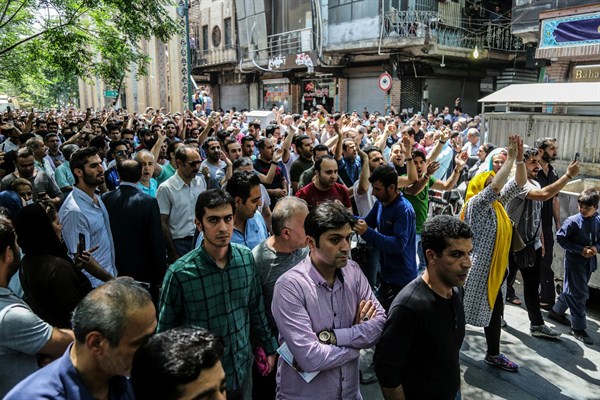A few years after Iran’s 1979 revolution, Ayatollah Ruhollah Khomeini disregarded an aide who was worried about inflation by declaring that “this revolution was not about the price of watermelons.” His successors may not have the luxury of assuming that the Islamic Republic’s religious essence is more important to most Iranians than their economic situation. Indeed, the proverbial price of watermelons has now plunged Iran into a potentially explosive economic crisis, with waves of public protests. The situation has been exacerbated by U.S. President Donald Trump’s decision in May to violate the terms of the nuclear deal with Iran and reimpose sanctions.
The Trump administration believes that by exerting “maximum pressure,” Iran will inevitably return to the negotiating table, or face implosion or even regime change. Economic strangulation is the core of this strategy. By sanctioning Iran’s oil industry and banking institutions, the United States plans to weaken Iran’s economy and provoke its sizable middle class, along with working and poor classes, to rise up against the state. Washington seems to be taking its fight inside Iran, launching “an offensive of speeches and online communications meant to foment unrest” domestically, according to U.S. officials who spoke to Reuters.
Trump believes his strategy is working. “Iran is falling apart,” he claimed in a recent Fox News interview. “They are having big protests all over the country, probably as big as they ever had before. And that all happens since I terminated that [nuclear] deal.” While the U.S. impact on these protests remains unclear, Iran is not falling apart, but it is preparing itself politically and economically to cope with the renewed American sanctions and potential internal upheaval.

